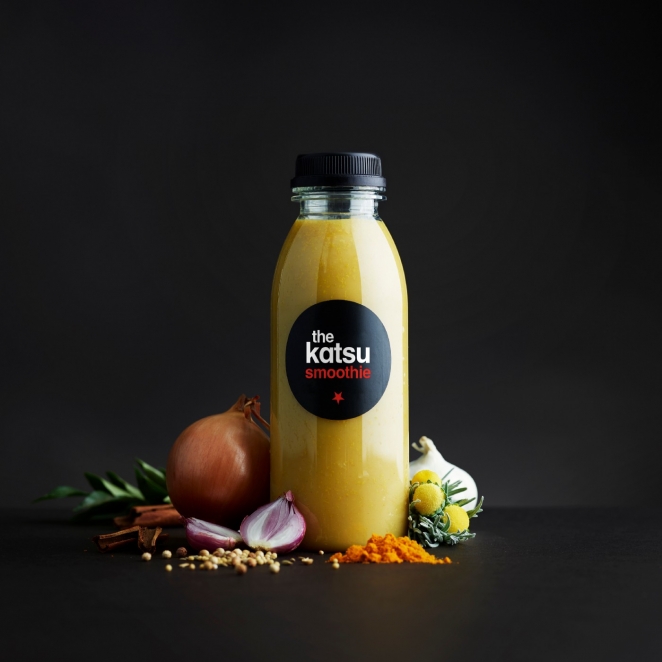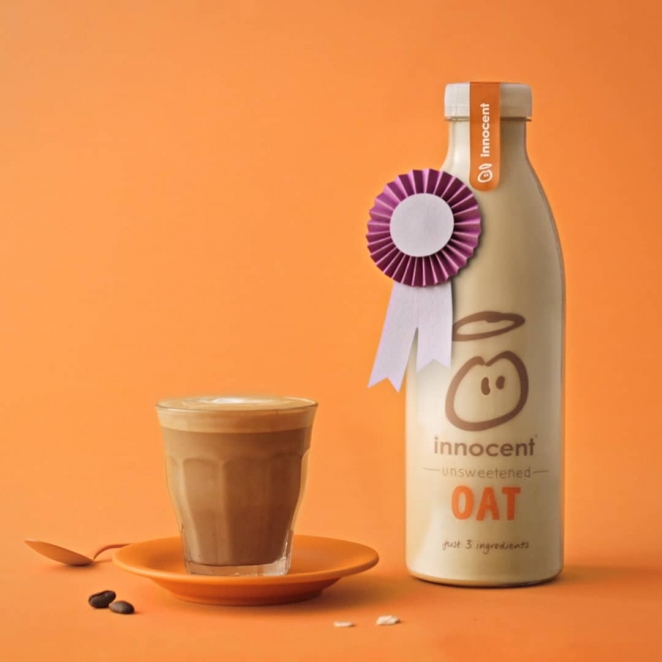Wherever you turn these days, it’s easy to find something crafted “from sustainable sources.” That new piece of clothing from Zara? Check. That pint of organic milk from the supermarket? Check. And so on and so forth.
However, you’d be surprised to know how many of these claims, albeit true to their core, are just an extremely sophisticated form of greenwashing. Today, and especially after everything that happened with Extinction Rebellion and Greta Thunberg, sustainable is the new cool. Which is certainly great. But how many corporations out there are actually being as sustainable as they claim?
Yes – I'm talking about your favourite fashion brand too.

Wagamama is incredibly committed to sustainability. Image credit: Jonas Roth
What is Greenwashing?
Greenwashing is the practice of employing marketing moves and campaigns to make claims of sustainability when actually your wider corporation isn’t sustainable at all. It is an attempt to appeal to a specific segment of consumers, the ones environmentally-savvy and focused on social good, in the attempt to paint a positive image of a corporation.
The origins of the term greenwashing come from an all-too-famous story from 1983, as reported by The Guardian. A man named Jay Westerveld, who was an undergraduate student at the time, was surprised to see a hotel urging customers to reuse towels “in order to save the coral reefs.” However, the hotel chain itself cared very little about sustainability, as no evident efforts were in place to reduce waste in the rest of the building. It was merely a way to sound environmentally-conscious and focused on social good, while looking for a way to save costs by not washing towels so often.
Fast-forward three years later and Westerveld wrote an essay for a literary magazine with quite some readership in New York City, and that is how the term greenwash was born. While most corporations are not that overt about their greenwashing anymore, that doesn’t mean that the practice has disappeared. Quite the contrary, in fact.
Greenwashing was much more vicious a few decades ago, and thank goodness, blatant lies are not that common in our beautiful industry anymore. However, there’s still the issue of white lies - of avoiding to tackle or address certain issues to preserve the status quo and drive profitability. That grey area is precisely where these disingenuous corporations operate.
To go back to the original examples, how many clothes from certain fashion brands are actually sustainable, compared to the overall production chain? Even when a fashion brand is claiming to be green and sustainablein one area of its business, it doesn’t mean it is being sustainable everywhere else.
This commercial by Chevron is still regarded as one of the golden examples of greenwashing in the industry.
The worst examples of greenwashing
This is not the time nor place to start a lengthy list of greenwashed initiatives and products, but nonetheless, there are some that still exist today and are way more dangerous than what they claim. Vegan leather is one of them. According to The Good Trade, vegan leather is often made with microplastics and synthetic fibre, meaning a good number of vegan leather products are actually harmful for the environment. The industry is working to develop plastic-free vegan leather which would solve the issue, but manufacturing processes are way too different in way too many companies to truly pinpoint which ones are being as sustainable as they claim.
Other examples are organisations creating apparently sustainable products using non-sustainable raw materials. Did you know that the Toyota Prius is actually bad for the environment? One of the reasons is that the batteries used in the manufacturing process are created and produced through several global shipments to reach the end of the production chain, meaning creating one single car is still quite harmful to the environment.
There are of course some corporations which do genuinely care about the environment. These are often brands born with sustainability at their core, such as Patagonia, Oatly or Innocent. Such brands aim to target an extremely specific segment of consumers and have sustainability embedded into their entire story, manufacturing process and products. For instance, you’ll rarely find anything other than natural ingredients in Innocent juices, and if they are there, the label goes a long way to explain why and how it’s not harmful to the environment.

That hybrid car you've been dreaming about for so long isn't exactly as sustainable as you believed...
Sustainability shouldn’t be a box-ticking exercise
Too many brands see sustainability as something that is ‘nice to have’ but don’t go far enough to make sure change starts from them. Some parts of the manufacturing process will be shady or unclear, there will be little transparency in their communications, and they will try to paint a positive image of themselves by conveniently omitting certain details which would make a significant difference.
So far I’ve tackled brands – but some agencies certainly aren’t exempt from this exercise. Though things are clearly changing, there are still too many organisations who are more focused on being labelled sustainablerather than on urging their clients to make positive change. Becoming a certified a B-Corp isn’t enough to wash your sins away – what is it that you are actually doing to change the future? How are you helping the environment? Are you giving up a portion of your profits to help build a better world? Or are you simply setting up meetings with activists and non-for-profit groups as a PR stunt?
At each and every step of your business process and partnership, you should always ask yourself: are we doing enough to make this as sustainable as it can be?
Clearly, not every campaign should rotate around sustainability. But it doesn’t mean that the environment and its health should be overlooked and not helped whenever possible.

Innocent is seen as one of the most genuinely sustainable companies out there.
Why do companies practise Greenwashing?
It’s easy to see why some businesses would adopt the practice of greenwashing. Being seen as positive companies is profitable, especially nowadays. People want to feel connected to their favourite brands as much as they can, and being relatable whilst advocating for our planet’s health is an excellent way to do so for any brand. It is, then, incredibly tempting for a company to practise greenwashing in order to appeal to a certain segment of consumers – one which is growing in numbers by the year.
Of course, it is not all. Both the public and global governments are starting to put pressure on brands to become more transparent and reduce their impact on the environment in any way possible. But as such pressure increases, so does the temptation to greenwash one’s practices in the most sophisticated ways possible.
So with companies becoming a bit smarter in terms of hiding their greenwashing practices, just how can consumers spot and stop greenwashing? Fortunately, there are solutions.

Image credit: Juice for Qatar National Day
How to spot (and stop) Greenwashing
There are plenty of corporations out there who focus solely on being as sustainable as possible from the ground up. Companies which are truly sincere in their sustainable claims are actually easier to spot than it may sound.
Truly sustainable companies will incorporate sustainability in their supply chain, whilst ensuring that all its parts are environmentally neutral or positive. This means they won’t just focus on one aspect, but will, on the contrary, make sustainability the core of their business.
There is one buzzword which keeps popping up when talking about social good and sustainability, and that is transparency. Companies practising greenwashing will often be dishonest, vague and wary of admitting their own mistakes, trying to prevent consumers from seeing the honesty behind their words. This is not a hard-and-fast rule, but it can be useful when paired with other considerations.
Perhaps the most obvious indicator of greenwashing is when a company only creates one sustainable product, while keeping the rest of the line sub-par in terms of sustainability. This is sadly quite common for fashion brands, and you can hear everywhere stories of Zara, H&M, Alcott and others only introducing one line of “green products” without revolutionising their entire supply chain. One line is all good and fun; but what about all the rest of your collection?
Clearly all companies will aim to make profit and meet as wide a demand as possible, but what about the after-life of their products? If companies are not concerned about what happens to their product or packaging post-purchase, that is one form of greenwashing. They may promote overconsumption, manufacture more items than needed in an effort to sell as much as possible, and they won’t be bothered to educate consumers about what happens once that product gets to the end of the line.
Today, the main issue with companies claiming to be sustainable is that anyone can slap a “bio” or “environment-friendly” label on their product and call it a day.
Real change comes from making active steps to change the status quo, not just by calling yourself a sustainable brand. What is the company doing beyond promoting sustainable products? How is it educating its consumers to ensure they know everything about their supply chain, efforts, and how to be sustainable in their daily lives? If a brand’s sustainable claims sound like a lot of meaningless jargon, you may be in front of a case of blatant greenwashing.
In general, keeping up to date with the industry can help, and as creative professionals, it is up to us to ensure that our clients become as sustainable as they can be. We certainly have more power in our hands than we believe to ensure that sustainable design becomes a standard in the industry, and only we can stop greenwashing with our own, active efforts.
So the next time a client comes to you or your agency asking for advice on a new sustainable campaign, make sure to work with them so they can truly understand what being sustainable means. And if it’s just too difficult to make them reason, perhaps it’s not a client worth your time after all – as profitable as that business partnership may or may not turn out to be.






